Shotwell’s Landing has begun the colorful flourish of flowers once again, Post and photos by Forrest Edelman.
Forrest Edelman manages the the Shotwell’s Landing Facility for the Center for Natural Lands Management.
Shotwell’s Landing has begun the colorful flourish of flowers once again
Shotwell’s Landing is a site that grows bulbs and seeds, as a part of the Nursery Program in the Center for Natural Lands Management. It is also the primary processing site for the harvested seed, collected from farm or field sites.
This year I noticed a detail in the shooting star genus Primula (Formerly Dodecatheon). This is that the red line on the yellow collar of the flower is different between the two species we grow. For Primula hendersonii the line is broad and of a crimson color.
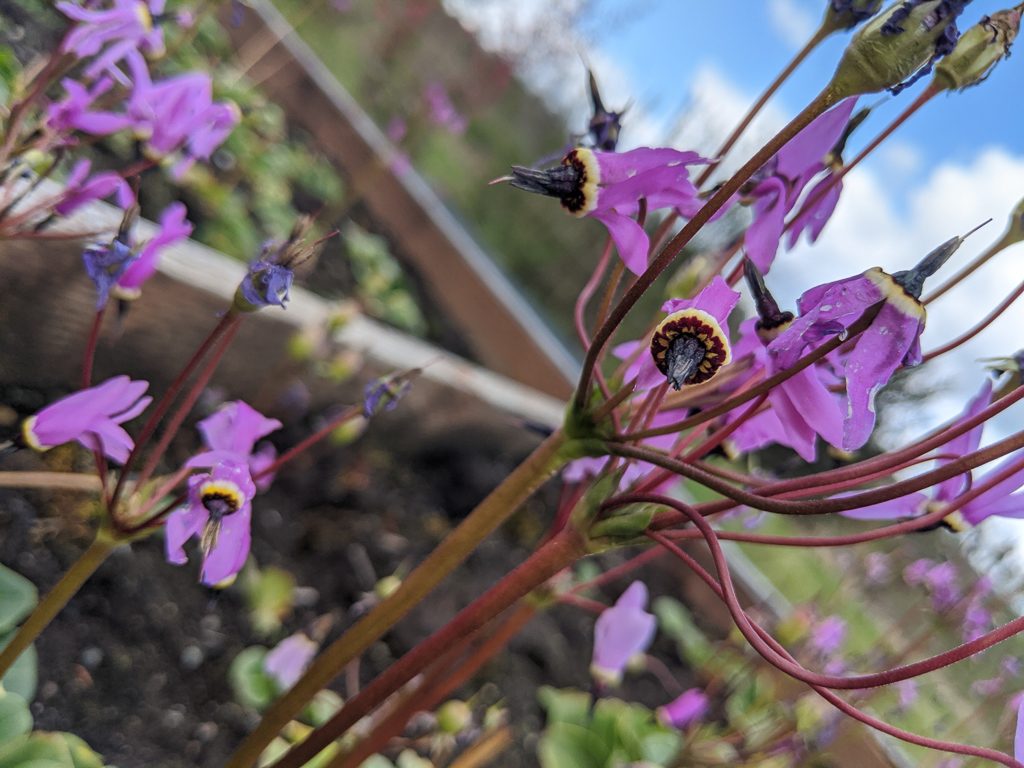
Primula hendersonii, Broad-leaved Shooting Star, photo by Forrest Edelman.
While for Primula pulchellum the line is fine and bright red.
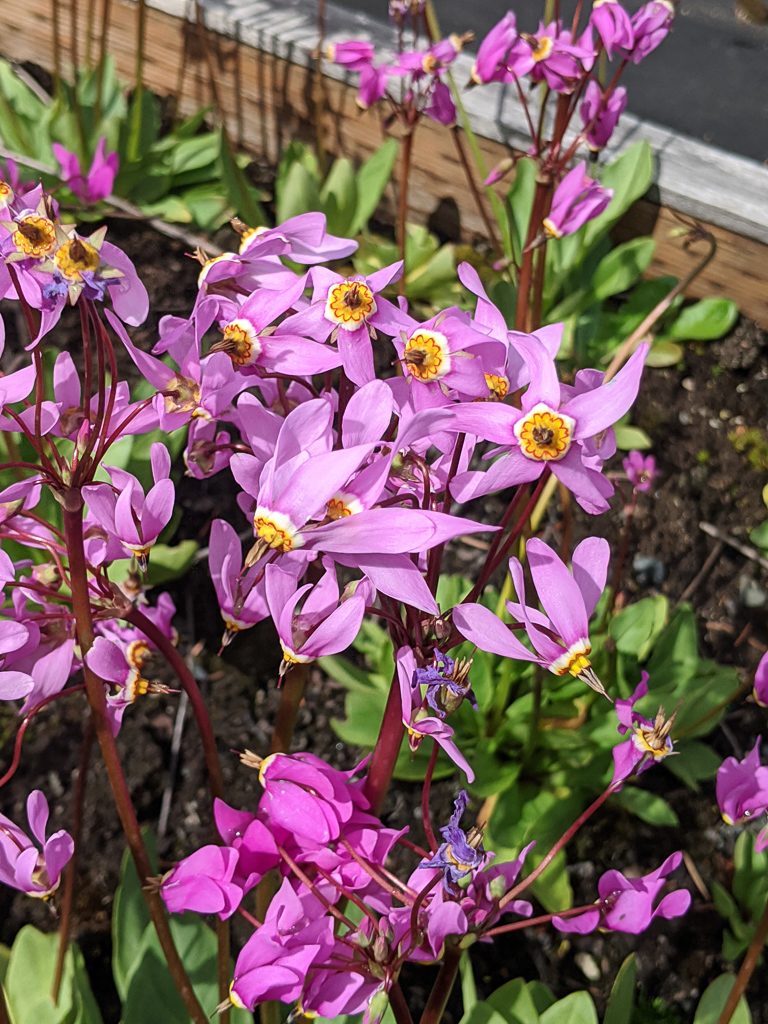
Primula pulchellum, Few-flowered Shooting Star, photo by Forrest Edelman.
Two regions of Plectritis congesta spp. congesta are being grown at Shotwell’s Landing this year and each have distinctive shades of pink. Otherwise known as Sea Blush, the South Sound Prairies region has a full pink color when compared to the Lower Olympics region which looks relatively pale.
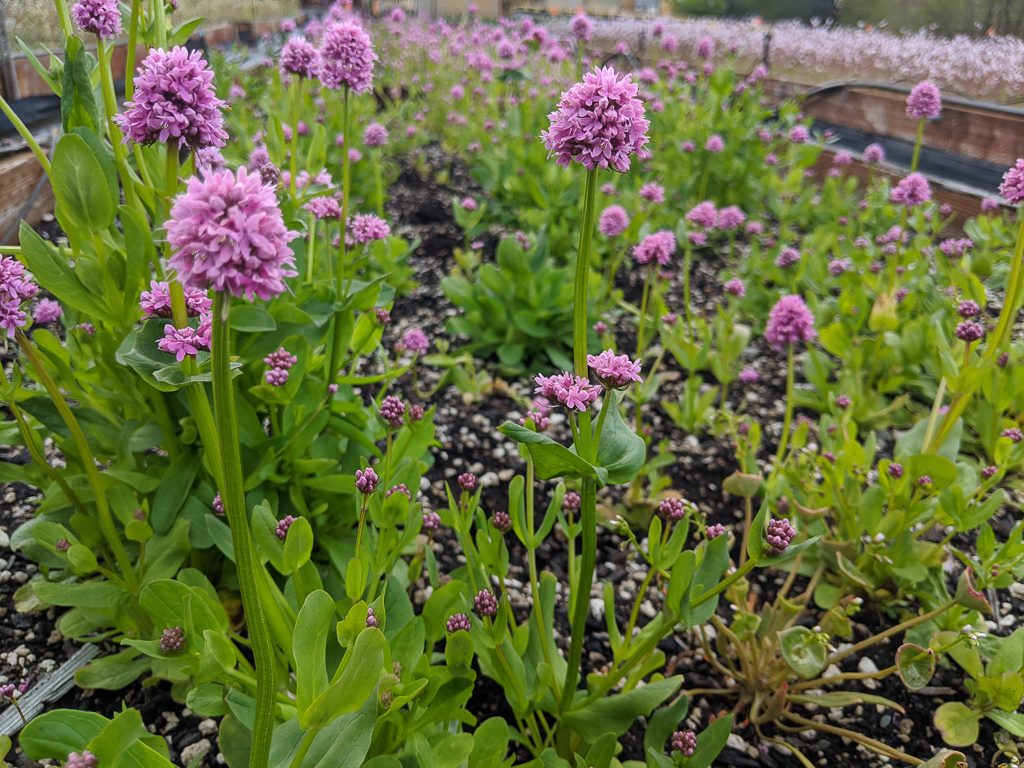
Plectritis congesta, ssp congesta, Sea Blush from the South Sound Prairies Region, photo by Forrest Edelman.
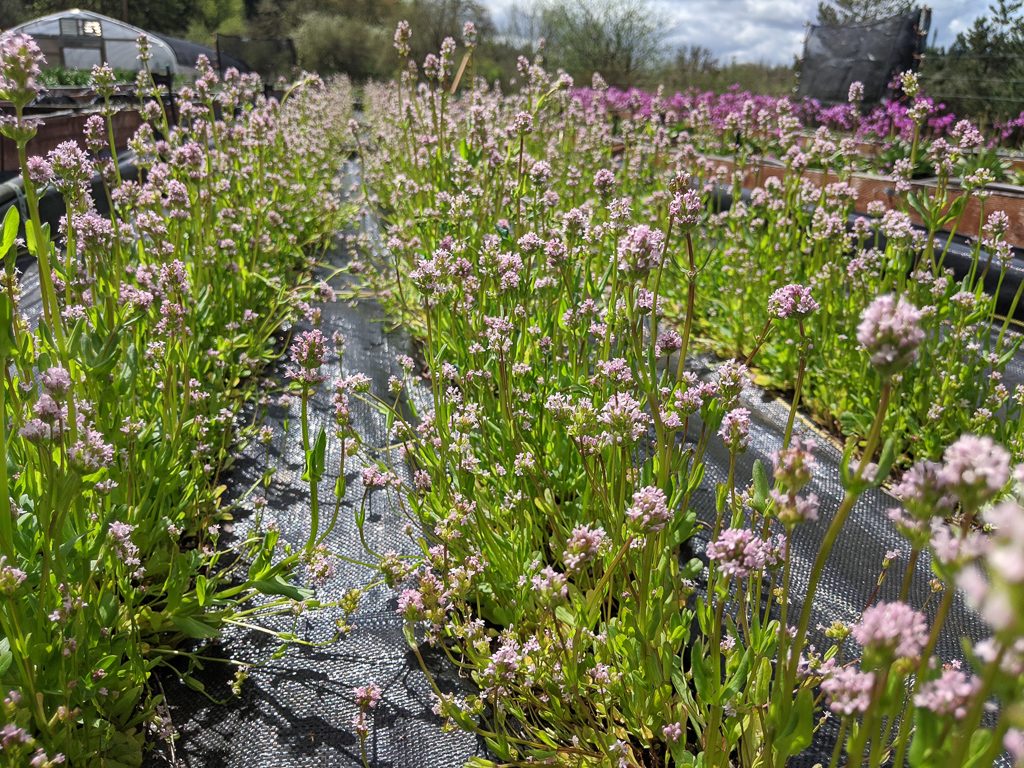
Plectritis congesta ssp congesta, Sea blush from the Lower Olympics region, photo by Forrest Edelman.
The Violet Trial is blooming nicely; the picture does not contain the sweet smell like there was when taking that photo.
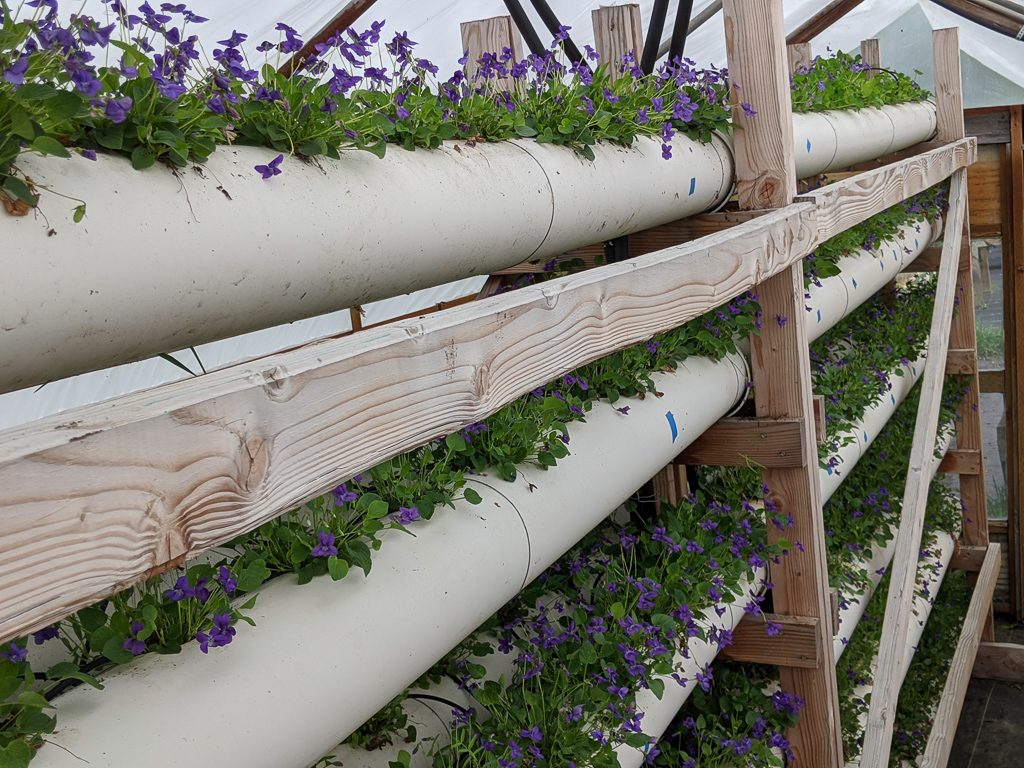
Viola adunca, Hookedspur violet, Early Prairie violet, photo by Forrest Edelman
Deer fencing has been completed, which is a relief. I’ve tried explaining the importance of the endeavors here to the deer but I’m glad to see that predation averted, and for full flower beds to bloom fully.
The bed shown below contains four species:
Castilleja hispida (harsh indian paintbrush) Orange
Armeria maritima (sea thrift) Pink
Camassia quamash (camas) Light Blue
Camassia leichtlinii (great camas) Purple
Background of four flowers is Primula pulchellum (few flowered shooting star) Pink
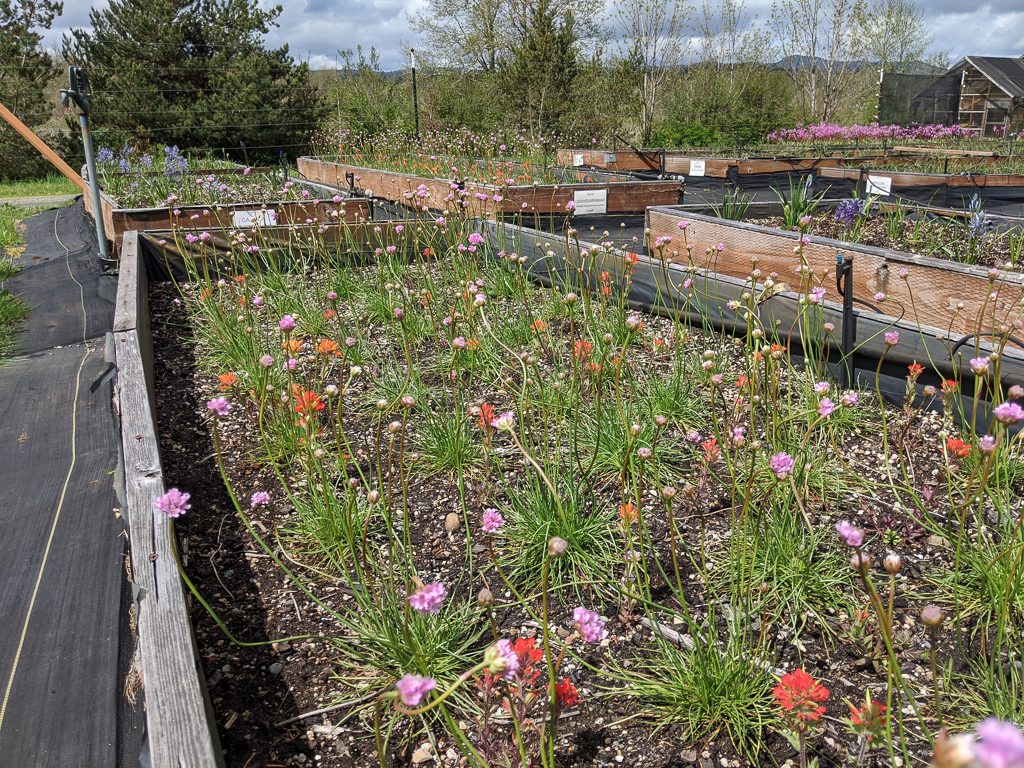
The Four Flowers bed, see above for species, photo by Forrest Edelman.
Looking forward to many more forms of flashy foliage in the coming months. Here’s a sampling of the species being grown:
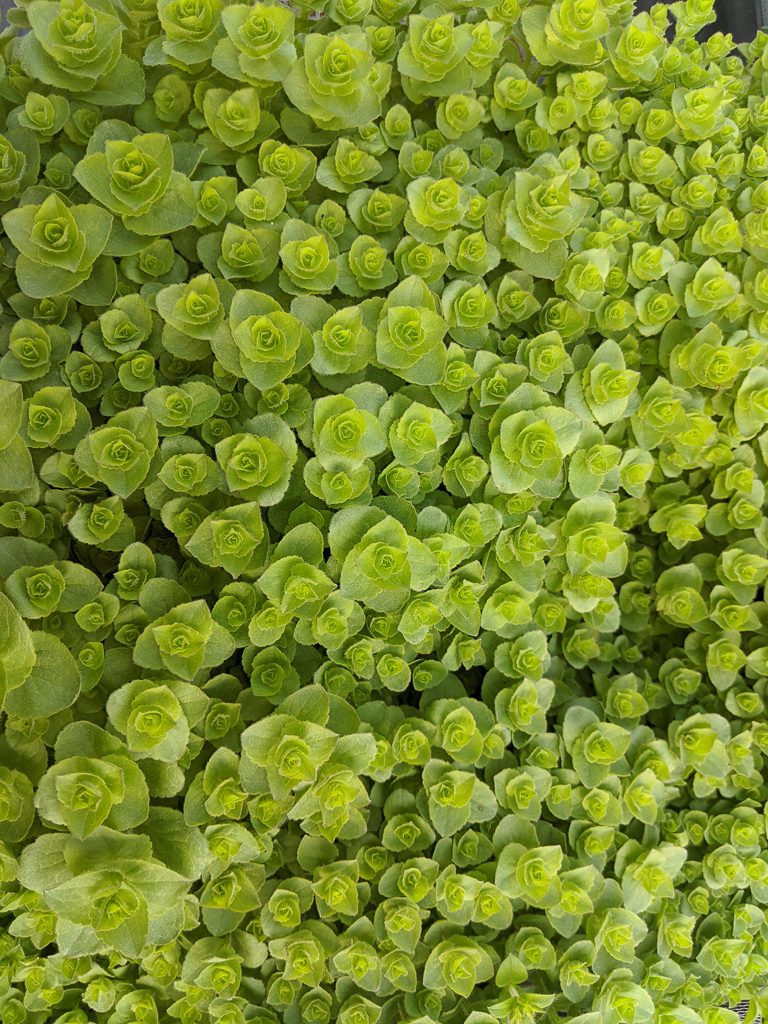
Triodanis perfoliata, Clasping Venus’s looking-glass, photo by Forrest Edelman
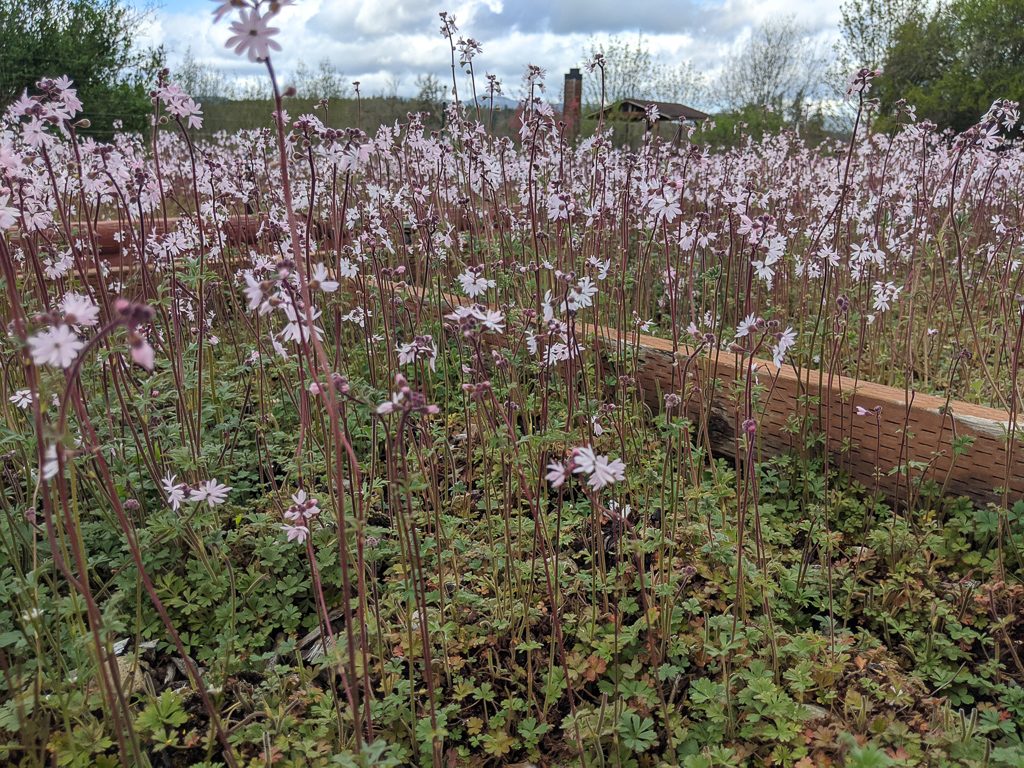
Lithophragma parviflorum, Smallflower woodland star, photo by Forrest Edelman.
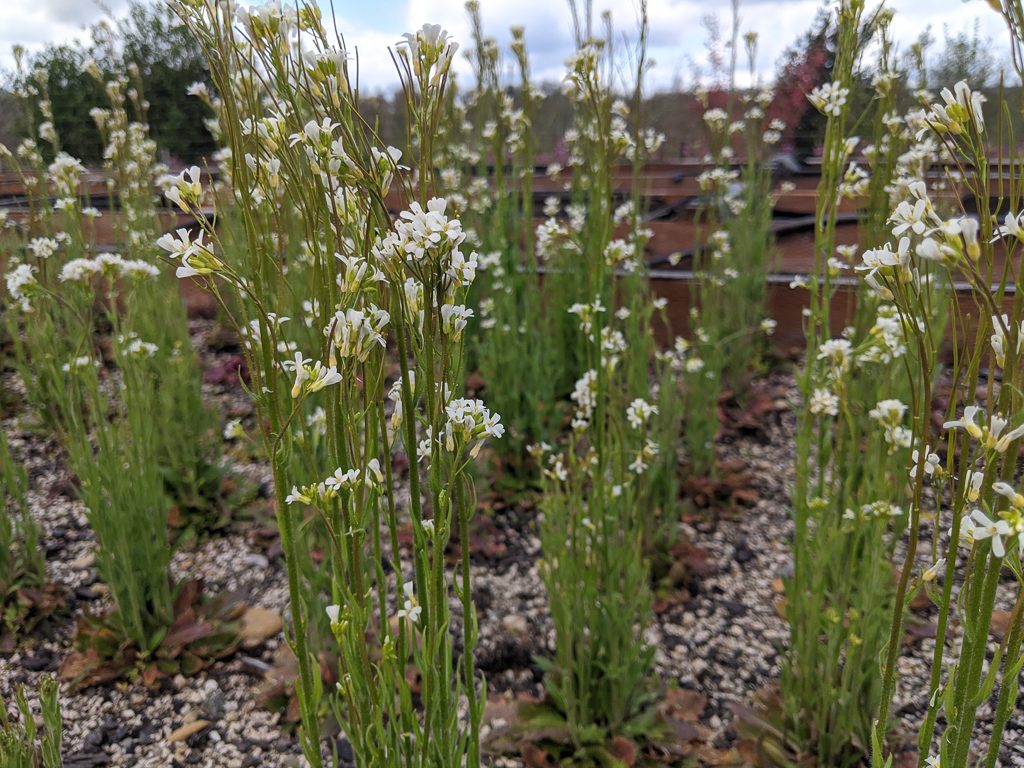
Arabis hirsuta, Hairy rock-cress, photo by Forrest Edelman
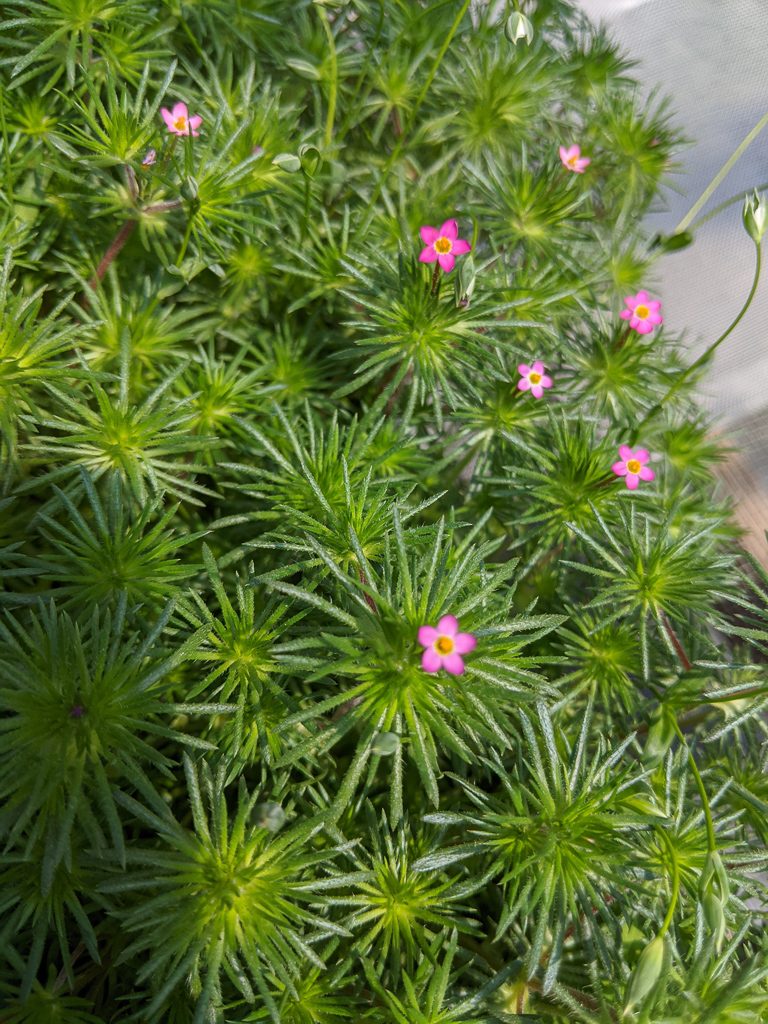
Leptosiphon bicolor, True babystars, photo by Forrest Edelman.
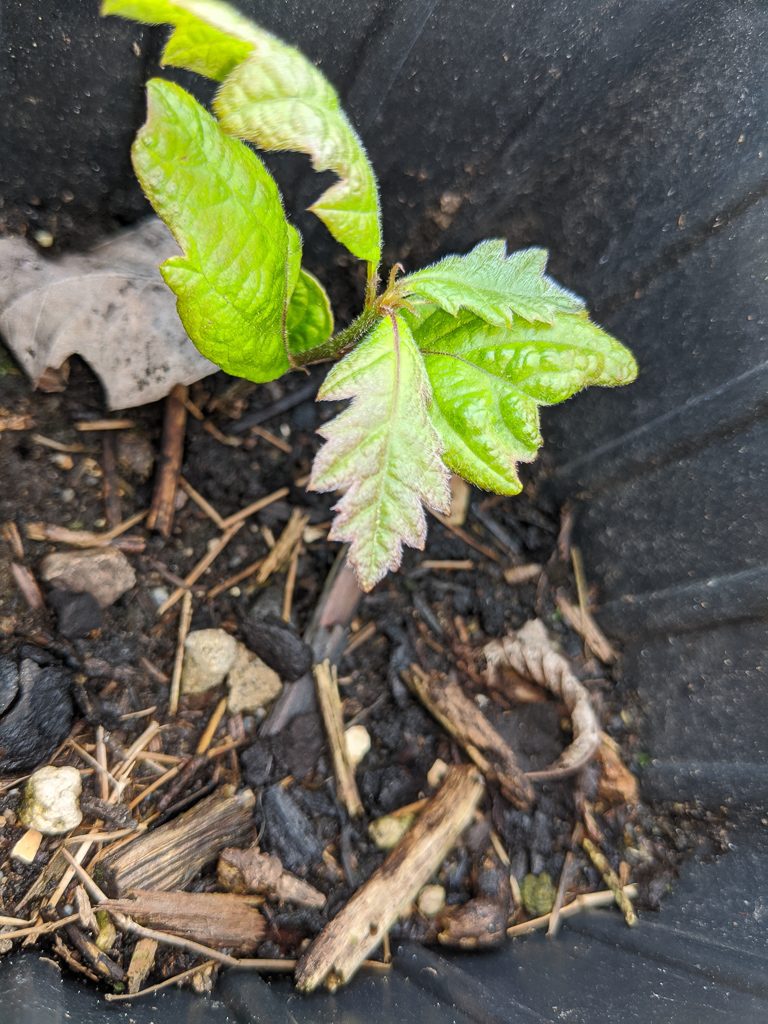
Quercus garryana, Garry Oak, photo by Forrest Edelman.
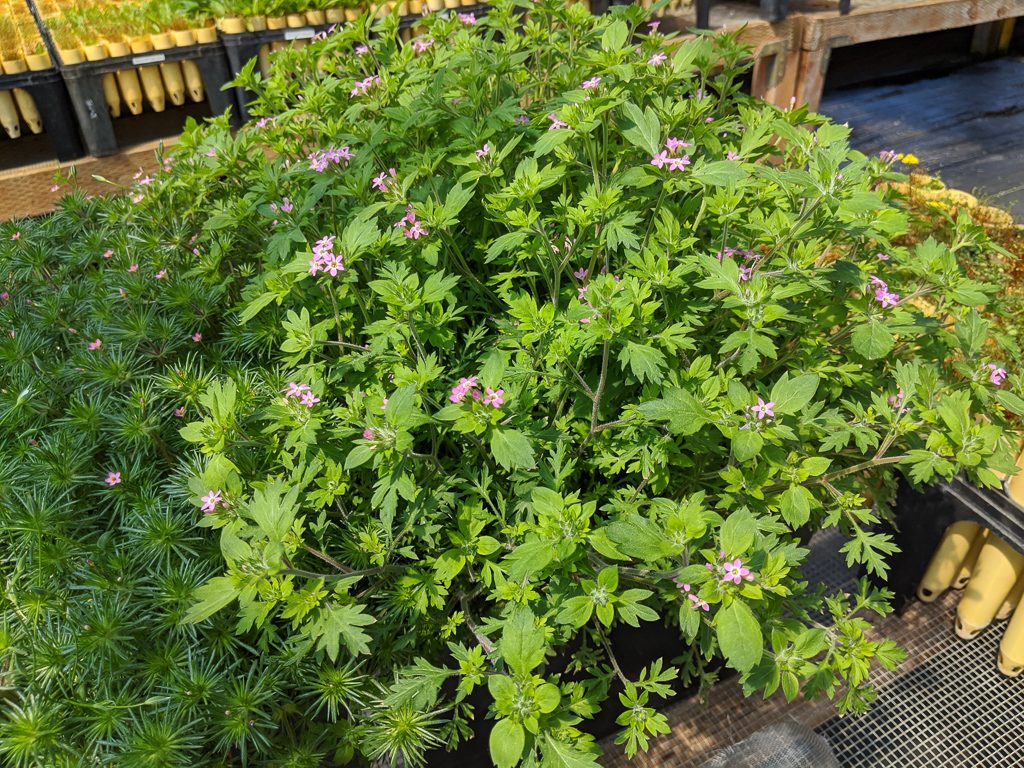
Collomia heterophylla, Variable-leaf collomia, photo by Forrest Edelman.

